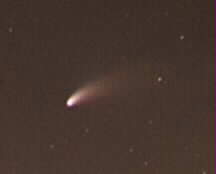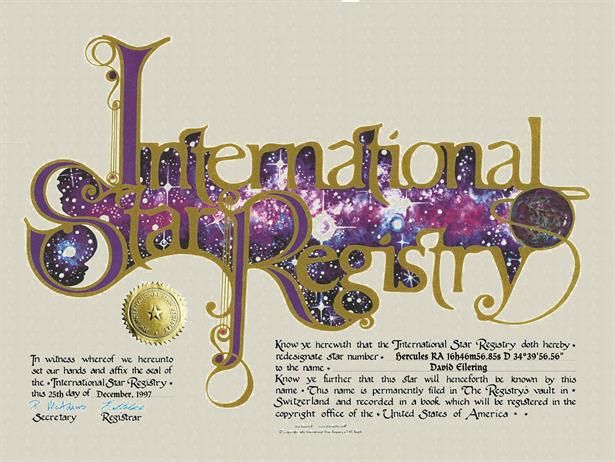
Copyright © 1997 - David C. Eilering
All rights reserved
Total Solar Eclipse - Mon, Aug 21, 2017
On Monday, August 21, 2017, we went to De Soto, Missouri to view the total solar eclipse. See this page for more information and pictures.
Total Solar Eclipse - Mon, Apr 8, 2024
On Monday, April 8, 2024, we weent to Jackson, Missouri to view the total solar eclipse. See this page for more information and pictures.

I took this picture of the comet Hale-Bopp on March 31, 1997. I used 100 ASA film in a Canon A-1 SLR with a 50mm lens mounted on a tripod. The exposure was for 8 seconds.
Like flying, I've been interested in astronomy for quite a while. Until 1996, I had never even owned a telescope. Then, one night in Cleveland, a friend showed me the night sky using a pair of binoculars. I was amazed! There were millions of stars that I had never seen before. I had never thought about turning my binoculars upward to the night sky. Looking at the night sky through a pair of binoculars gave me a whole new perspective of stars. In addition, I never knew planets and galaxies were so easily observable. I remember my disbelief when my friend pointed out the Andromeda galaxy with the naked eye!
My Telescopes
In the fall of 1995, I purchased several books on the subject of homemade telescopes. After reading the bare minimum, I decided to build my own telescope. I built a 4.25 inch newtonian reflector. It is simply amazing what a difference a good quality telescope makes for observing. This telescope is much better quality than most of the "toy" (yet expensive) telescopes sold in department stores. I plan to build a bigger (10 inch maybe) telescope in the future.

In the summer of 1998, I purchased a Meade 8 inch Schmitt Cassegrain telescope with an astronomy computer. This is a very nice telescope! It has a very stable tripod, a built-in clock drive and great optics. The computer has information about objects in the sky and helps locate them (which is great for faint objects). I also purchased a solar filter for it so I can view the sun. Here is a picture of what this telescope looks like.
I also purchased some nice binoculars in the fall of 1998. These binoculars are designed for astronomy. They are Orion 9x63 Mini Giants. Before I purchased these new binoculars I was using an old pair of 7x35s. What a difference!!!
A friend and fellow amateur astronomer, Mike Mayberry, gave me a very nice Christmas gift in 1997. He had a star named after me! So, the International Star Registry has a star named “David Eilering”. Here's the information about my star:
| Star Name | David Eilering |
|---|---|
| Star Date | Dec 25, 1997 |
| Coordinates | Hercules RA 16h 46m 56.85s D 34° 39' 56.56" |
| Magnitude | 11.7 |
| Volume | 5 |
| Nearest Messier | M13 - Hercules Cluster - Globular Cluster |
| GSC Number | 2585:2503 |

Here are the certificates:


Astronomy Software
One of the best tools I've used to learn about astronomy is computer software. I have Voyager by Carina Software (for the Macintosh) and Dance of the Planets by ARC Scientific Simulations (for the PC). SkyMap by Skymap Software is an excellent shareware astronomy package. You may download it and "try it before you buy it". There are also some freeware astronomy software programs that are very good (and the price is right). Stellarium is a very nice program that runs on Windows, Linux or Mac OS X. Celestia is a very nice open source space simulator for Windows, Linux or Max OS X. KStars is also an open source project for Linux. If you don't have a Linux computer, you can download the free live CD distro called Knoppix and try out Linux without installing it on your hard disk. KStars is included with the Knoppix distro. All of these packages simulate the position of the stars and planets for any position on earth in the past or the future. Dance of the Planets is also an orbital simulator. With it, I was able to track comet Hyakutake and Hale-Bopp. Highly recommended...